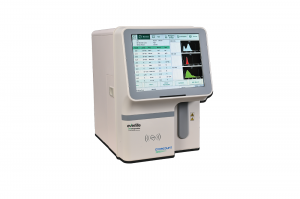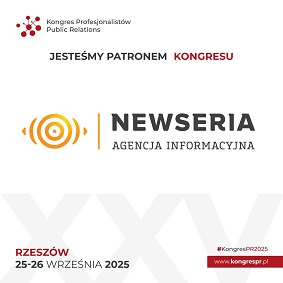Hematology Analyzer Market to Reach USD 8.82 Billion by 2032, Growing at a CAGR of 7.5%
Hematology Analyzer Market Research Report Information By Product, By Modality, By End User, and By Geography
CA, UNITED STATES, May 13, 2025 /EINPresswire.com/ -- Market OverviewHematology analyzers are automated instruments designed to perform complete blood counts (CBC) and related differential analyses by measuring red blood cells (RBCs), white blood cells (WBCs), platelets and other parameters. These analyzers offer high-throughput testing, enhanced precision, minimal human error and faster turnaround times compared to manual microscopy. Clinicians, diagnostic laboratories and blood banks rely on hematology analyzers to support routine screening, disease monitoring and transfusion compatibility testing. With the growing prevalence of anemia, leukemia and other blood disorders, demand for rapid, accurate and cost-effective hematology solutions continues to surge. Advanced platforms now incorporate optical fluorescence, impedance technology and flagging algorithms to boost sensitivity and detect rare cell populations. In emerging regions, portable point-of-care analyzers address infrastructure gaps, driving new market opportunities. According to market research, integration of data management software and remote service capabilities further strengthens laboratory workflows and supports regulatory compliance. The Global Hematology Analyzer Market is estimated to be valued at US$ 5.31 Bn in 2025 and is expected to exhibit a CAGR of 7.5 % over the forecast period 2025 To 2032.
Request Your Sample Copy of the US Tariff Impact Analysis Now -https://www.coherentmarketinsights.com/insight/request-sample/6844
Key Takeaways
Key players operating in the Hematology Analyzer Market are Boule Diagnostics AB, Bio-Rad Laboratories, Danaher Corporation, Sysmex, Horiba Medical, Nihon Kohden Corporation, Siemens AG, Shenzhen Mindray Bio-Medical Electronics Co., Ltd, Abbott, Drew Scientific, Diatron, EKF Diagnostics, F. Hoffmann-La Roche Ltd, Cormay Diagnostics, AGD Biomedicals, Pioneer Impex, BIOGENIX INC. PVT. LTD, and Drucker Diagnostics. These market companies maintain robust R&D pipelines, forge strategic partnerships and pursue mergers to bolster product portfolios. Competition among these market players fuels innovation in sample throughput, reagent efficiency and integrated software solutions, shaping industry trends in quality control and regulatory compliance.
Growing demand
The Hematology Analyzer Market growth is propelled by an aging population, rising incidence of chronic disorders and expanding preventive health screenings. Clinicians increasingly adopt advanced analyzers to gain deeper market insights into hematological parameters, enabling personalized treatment strategies. Demand for rapid diagnostics in outpatient settings and community clinics creates market opportunities for compact, user-friendly units. In addition, government initiatives to increase healthcare access in developing nations drive investment in laboratory infrastructure. Market research highlights that expanding applications, such as veterinary hematology and oncology monitoring, contribute to rising industry share. However, challenges around reagent costs and operator training persist, underscoring the need for scalable solutions.
Global expansion of market
Global expansion of the Hematology Analyzer Market is characterized by strong demand in North America and Europe, where established healthcare systems support ongoing upgrades of laboratory equipment. Meanwhile, Asia Pacific emerges as the fastest-growing region, fueled by rising healthcare expenditures, growing diagnostic laboratory networks and favorable reimbursement policies. Latin America and Middle East & Africa present lucrative opportunities as governments invest in public health initiatives and partner with private diagnostics providers. Market forecast models reveal that tailored product launches addressing regional requirements—such as low-power analyzers and multilingual software interfaces—will accelerate adoption. Strategic distribution alliances and localized service centers further enhance market scope and business growth across key geographies.
Market Key Trends
One of the most significant market trends in the Hematology Analyzer Market is the integration of artificial intelligence (AI) and digital connectivity into analyzer platforms. AI-driven algorithms enhance the accuracy of cell classification and flagging by learning from large datasets of peripheral blood smears, reducing manual review rates. Cloud-based data management systems facilitate real-time remote monitoring of instrument performance, reagent levels and quality controls, streamlining maintenance schedules and minimizing downtime. This trend also aligns with the rise of telemedicine, enabling laboratories to share results instantly with clinicians regardless of location. Furthermore, digital dashboards provide actionable market insights into test volumes, error rates and operational costs, empowering laboratory managers to optimize workflows and resource allocation. As laboratories strive for greater efficiency and data security, adoption of AI-enabled hematology analyzers is poised to redefine market dynamics and set new standards for diagnostic excellence.
Geographical Regions Where Value Is Concentrated
The Hematology Analyzer Market exhibits a concentrated revenue landscape, with North America commanding a significant portion of global market revenue due to advanced healthcare infrastructure, early adoption of cutting-edge diagnostic platforms, and well-established reimbursement frameworks. This regional dominance underscores its commanding Hematology Analyzer Market share and reinforces broader industry trends toward automation and integration of digital laboratory solutions. Europe represents the second largest contributor, buoyed by robust regulatory support, strong R&D investment in personalized medicine, and collaborative market research initiatives that drive both market insights and innovative product launches across market segments. Within Europe, Western European nations, in particular, benefit from comprehensive healthcare coverage and an increasing focus on point-of-care testing, which sustains high utilization rates of automated hematology systems. Asia Pacific accounts for a substantial portion of overall industry share, propelled by growing healthcare expenditure, expanding hospital networks, and rising prevalence of chronic diseases. However, its contribution to value concentration remains moderate compared to Western markets, as emerging economies continue to scale infrastructure and refine regulatory processes. Latin America and the Middle East & Africa offer niche opportunities, reflecting growing awareness of diagnostic best practices, gradual improvements in laboratory networks, and targeted investments to enhance public health outcomes. Moreover, evolving market drivers such as the push for decentralized testing models and the integration of artificial intelligence in diagnostics are most evident in North America and Europe, reflecting maturity in digital health adoption. The presence of key research institutions and concerted funding for hematology assay improvements further bolsters these regions’ leadership in market analysis and business growth. In the Asia Pacific, swift urbanization and government-led initiatives to strengthen rural diagnostic networks are creating fertile ground for market companies to tap into underpenetrated segments, while addressing market restraints linked to reimbursement variability and training limitations. Latin America’s emerging laboratory accreditation programs and the Middle East & Africa’s gradual alignment with international quality standards expand the Hematology Analyzer Market opportunities landscape, inviting multinational and regional players to tailor growth strategies. As a result, companies leveraging region-specific market insights and aligning with local healthcare priorities stand to optimize industry share and capitalize on untapped value pools.
Fastest Growing Region
Among the regional cohorts, the Asia Pacific emerges as the fastest growing segment within the Hematology Analyzer Market, driven by robust healthcare reforms, expanding insurance frameworks, and a surge in diagnostic demand fueled by rising prevalence of hematological disorders. Market drivers such as increased public and private healthcare expenditure, rising awareness of preventive diagnostics, and technological diffusion of portable and point-of-care analyzers converge to accelerate adoption across China, India, Japan, and emerging Southeast Asian economies. Government initiatives aimed at enhancing laboratory network capacities and streamlining regulatory approvals have shortened product launch cycles, enabling market companies to implement localized growth strategies and expand their Hematology Analyzer Market forecast horizons. Rapid urbanization and a growing middle-class population are amplifying out-of-pocket healthcare spending, creating new avenues for Hematology Analyzer Market growth and elevating the importance of cost-effective yet high-throughput solutions. Furthermore, collaborative research partnerships between domestic firms and global diagnostic vendors are promoting knowledge transfer, bolstering R&D ecosystems, and fostering innovation in next-generation analyzer platforms. Despite encountering market challenges—such as inconsistent reimbursement frameworks and infrastructural disparities between urban and rural centers—the region’s favorable demographics and evolving healthcare policies are mitigating these restraints. Segment-wise, the hematology analyzer sub-segments encompassing mid- and high-end automated systems have shown particularly strong uptake, as hospitals upgrade legacy equipment to digital workflows. Emerging point-of-care and portable devices are also gaining traction in community clinics and remote healthcare settings, where rapid turnaround times and ease of use are critical. Industry trends indicate that companies adopting hybrid go-to-market approaches—combining direct sales with distributor networks or leasing models—are better positioned to navigate regional market dynamics and capture a larger share of the expanding demand. The Hematology Analyzer Market forecast for Asia Pacific anticipates continued double-digit expansion rates through the next analytical cycle, underscoring the region’s transformative role in global diagnostics. As stakeholders align with local healthcare priorities and leverage digital platforms for after-sales services and remote monitoring, the Asia Pacific offers unparalleled scope for business growth and solidifies its status as a strategic growth frontier.
Get Up to 25% Discount on the US Tariff Impact Analysis Report -https://www.coherentmarketinsights.com/insight/buy-now/6844
FAQs
(1) What are the primary market drivers in the Hematology Analyzer Market?
The market is primarily driven by rising prevalence of blood disorders, increasing demand for automation in clinical laboratories, and growing emphasis on rapid diagnostic turnaround. Additionally, technological advancements such as digital cytometry and integration with laboratory information systems further fuel business growth and market expansion.
(2) Which regions dominate the Hematology Analyzer Market in terms of value?
North America leads in value concentration due to advanced healthcare infrastructure, favorable reimbursement frameworks, and strong R&D investments. Europe follows closely, supported by robust regulatory support and collaborative market research initiatives.
(3) What factors contribute to the fastest growth in the Hematology Analyzer Market?
The Asia Pacific region is experiencing rapid growth driven by healthcare reforms, rising diagnostic awareness, and increased investments in laboratory facilities. Government-led initiatives and expanding insurance coverage also play critical roles.
(4) What challenges are faced by companies operating in the Hematology Analyzer Market?
Key challenges include stringent regulatory requirements, high initial capital expenditure, and inconsistent reimbursement policies across regions. Supply chain complexities for reagents and precision components also pose operational hurdles.
(5) How do technological innovations shape the Hematology Analyzer Market?
Innovations such as point-of-care testing devices, artificial intelligence–driven image analysis, and cloud-based data management platforms are transforming diagnostics. These enhancements improve accuracy, reduce turnaround times, and create new market opportunities in decentralized testing environments.
(6) What are the key market segments within the Hematology Analyzer Market?
Major segments include high-end automated analyzers, mid-range desktop models, and portable/POC devices. Each segment caters to different clinical settings—from large hospital laboratories to small clinics—offering diverse market growth strategies and tailored solutions.
✍️ PR Authored By:
Alice Mutum is a seasoned senior content editor at Coherent Market Insights, leveraging extensive expertise gained from her previous role as a content writer. With seven years in content development, Alice masterfully employs SEO best practices and cutting-edge digital marketing strategies to craft high-ranking, impactful content. As an editor, she meticulously ensures flawless grammar and punctuation, precise data accuracy, and perfect alignment with audience needs in every research report.
About Us:
With a proven excellence in market research, Coherent Market Insights leads into data and analytics, audience measurement, consumer behaviors, and market trend analysis. From shorter dispatch to in-depth insights, CMI has exceled in offering research, analytics, and consumer-focused shifts for nearly a decade. With cutting-edge syndicated tools and custom-made research services, we empower businesses to move in the direction of growth. We are multifunctional in our work scope and have 450+ seasoned consultants, analysts, and researchers across 26+ industries spread out in 32+ countries.
Mr. Shah
Coherent Market Insights Pvt. Ltd.
+ 12524771362
email us here
Visit us on social media:
LinkedIn
Facebook
X
Legal Disclaimer:
EIN Presswire provides this news content "as is" without warranty of any kind. We do not accept any responsibility or liability for the accuracy, content, images, videos, licenses, completeness, legality, or reliability of the information contained in this article. If you have any complaints or copyright issues related to this article, kindly contact the author above.
AllScale Raises $1.5M to Empower Small Businesses with Accessible, Compliant Stablecoin Solutions
Vigna Law Group: 'Never Event' Retained Sponge Case Filed in Las Vegas
Dyspnea Market Size to Reach USD 11,827.3 Million by 2035 - Epidemiology Report by IMARC Group
Więcej ważnych informacji
 Jedynka Newserii
Jedynka Newserii

 Jedynka Newserii
Jedynka Newserii

Bankowość

Rośnie liczba i wartość udzielonych konsumentom kredytów gotówkowych. Gorzej mają się kredyty ratalne oraz te udzielane firmom
Rynek kredytowy w Polsce co do zasady rośnie, choć nierównomiernie. Z danych Biura Informacji Kredytowej wynika, że najlepiej rozwija się segment kredytów gotówkowych dla konsumentów. Wartościowo wzrosła też kwota udzielonych limitów w kartach kredytowych. Według prognoz BIK w całym roku wzrośnie wartość zarówno udzielonych kredytów mieszkaniowych, jak i gotówkowych, choć tych pierwszych poniżej inflacji. Wcześniejsze cięcia stóp procentowych przez RPP nie zmieniły tej prognozy.
Transport
37,5 proc. środków z Planu Społeczno-Klimatycznego trafi na walkę z ubóstwem transportowym. Organizacje branżowe apelują o zmianę priorytetowych projektów [DEPESZA]

Ministerstwo Funduszy i Polityki Regionalnej z końcem czerwca zakończyło konsultacje Planu Społeczno-Klimatycznego, który otwiera drogę do pozyskania 65 mld zł (11,4 mld euro) z unijnego Społecznego Funduszu Klimatycznego. Polska będzie jego największym beneficjentem, a 37,5 proc. budżetu zostanie przeznaczone na bezpośrednie wsparcie osób narażonych na ubóstwo transportowe. Organizacje branżowe oceniają jednak, że walka z tym zjawiskiem może się okazać nieskuteczna. W toku konsultacji zgłosiły swoje zastrzeżenia co do priorytetów w wydatkach i sposobu wsparcia inwestycji w transport rowerowy.
Prawo
Firmy będą mogły przetestować krótszy tydzień pracy z rządowym wsparciem. Nabór wniosków ruszy w sierpniu

Ministerstwo Rodziny, Pracy i Polityki Społecznej uruchamia pilotaż krótszego tygodnia pracy. Zainteresowane wzięciem w nim udziału firmy będą się mogły ubiegać o wsparcie finansowe ze strony rządu. Politycy Nowej Lewicy, którzy są pomysłodawcami testu tego rozwiązania, przekonują, że finalnie zyskają na nim wszyscy, zarówno pracownicy, jak i pracodawcy, a ostrzeżenia o spodziewanych problemach gospodarki są mocno przesadzone.
Partner serwisu
Szkolenia

Akademia Newserii
Akademia Newserii to projekt, w ramach którego najlepsi polscy dziennikarze biznesowi, giełdowi oraz lifestylowi, a także szkoleniowcy z wieloletnim doświadczeniem dzielą się swoją wiedzą nt. pracy z mediami.

![37,5 proc. środków z Planu Społeczno-Klimatycznego trafi na walkę z ubóstwem transportowym. Organizacje branżowe apelują o zmianę priorytetowych projektów [DEPESZA]](https://www.newseria.pl/files/1097841585/rower3,w_85,_small.jpg)







.gif)

 |
| |
| |
|